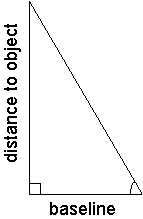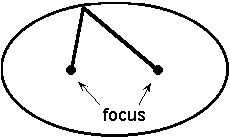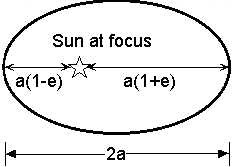

THE MIDDLE AGES, AND ASTRONOMY IN NON-WESTERN CULTURES
Learning in Europe went into a massive decline from the fall of the Roman Empire (476 AD) until about 1000 AD. The only Greek astronomy available in this period was that of Plato.
ST. AUGUSTINE (354 - 430) says philosophy (including science) must be a handmaiden to religion.
The ARABS saved much of the knowledge of the Greeks and translated it into Arabic. The Arabic astronomers where strongly influenced by Aristotle and Ptolemy. From universities in Moorish Spain, this knowledge was eventually retransmitted to the West, starting with GERBERT (Pope Sylvester II; 940 - 1003).
Arabic science declined following 1200 with the conquest of Spain and Mongol invasions from the east.
CHINA, INDIA and JAPAN had astronomical traditions of their own. Like the Arabs, they concentrated on recording observations and refining methods of prediction. There may have been some influence from Babylonian and Greek astronomy. Hindu numerals were introduced to the West by the Arabs.
The MAYANS of Central America used similar techniques and were particularly good at following the motions of Venus, which apparently had great religious significance for them.
THE RENAISSANCE
The Renaissance was another period of great ferment in all the arts and sciences.
NICOLAUS COPERNICUS (Polish; 1473 - 1543) rediscovers heliocentric model, but publishes posthumously. Copernicus's model still retains circular motion and epicycles. Preface (not written by Copernicus) suggests that model is not physical, but only convenient tool for calculation
GIORDANO BRUNO (Italian; 1548 - 1600) proposes that the Sun is just one star out of an infinite number. Burnt at the stake in 1600
HANS LIPPERSHEY (Dutch; 1587 - 1619) inventes telescope 1608
GALILEO GALILEI (Italian; 1564 - 1642)
Starting in 1609 uses telescope to make astronomical observations that contradict Aristotle
Also observes:
1616 Galileo ordered to treat Copernicanism as hypothetical
1633 Galileo condemned to permanent house arrest (despite papers giving
permission to publish hypothetically)
1992 Vatican acknowledges error after 359 years
Galileo argued that the Church should not make scientific positions as articles of faith nor should biblical arguments be applied to science
TYCHO BRAHE (Danish; 1546 - 1601)
JOHANNES KEPLER (German; 1571 - 1630) reduces Tycho's data using triangulation



animated illustration
of Kepler's 1st and 2nd laws
animated illustration
of Kepler's 3rd law--use your browser's BACK
button to return
NEWTON EXPLAINS IT ALL FOR YOU.
ISAAC NEWTON (English; 1642 - 1727) invents calculus and physics while on vacation from college!
The Three Laws of Motion
The Universal Law of Gravitation. F=GMm/r2
THE MOON IS FALLING
The motion of the Moon is governed by the same laws as gravity at the Earth's surface. This is the first time in history that it is shown that the laws of Nature are the same on Earth as they are in the heavens.
APPLICATIONS OF NEWTON'S LAW OF GRAVITATION
OBJECTIONS TO THE HELIOCENTRIC MODEL ANSWERED
Advantage of the heliocentric theory:
![]() simpler (Occam's
razor)
simpler (Occam's
razor)
Objections to the heliocentric theory and the motion of the Earth
![]() why don't we get
thrown off? (Earth's rotation isn't fast enough)
why don't we get
thrown off? (Earth's rotation isn't fast enough)
![]() why don't we feel
the wind of our motion? (the air moves along with the Earth)
why don't we feel
the wind of our motion? (the air moves along with the Earth)
![]() why don't we observe
parallax? (Aristarchus: it's there, but very small, because the stars are so far
away)
why don't we observe
parallax? (Aristarchus: it's there, but very small, because the stars are so far
away)
![]() why do dropped objects
appear to fall straight down if the Earth is moving?
(Galileo: dropped objects start with the velocity of the Earth)
why do dropped objects
appear to fall straight down if the Earth is moving?
(Galileo: dropped objects start with the velocity of the Earth)
Problems of both heliocentric and geocentric models:
![]() lack of explanation
(provided by Newton)
lack of explanation
(provided by Newton)
![]() lack of direct evidence--see below
lack of direct evidence--see below
PROOF OF THE HELIOCENTRIC MODEL
Actual proof that earth rotates
Actual proof that earth revolves around the sun
your instructor